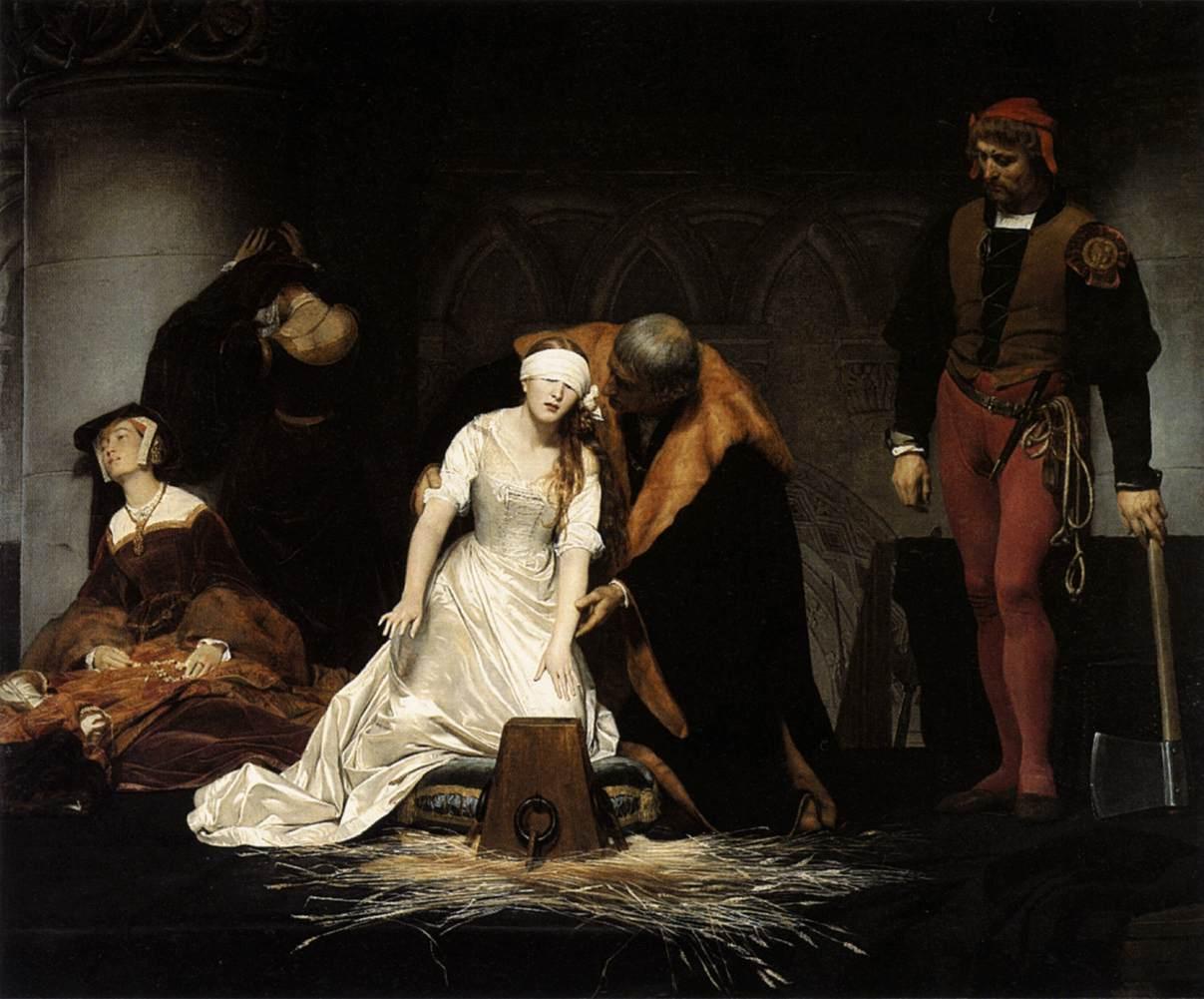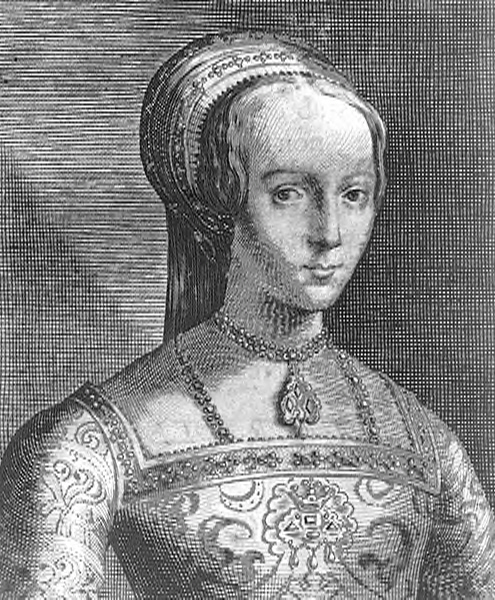I usually focus on historical women who have accomplished a whole lot, against all odds and expectations given their oppressive historical contexts. Today I wanted to spotlight a historical woman who didn’t really do much. She was only queen for nine days, and most of that time was spent inside a dungeon. Then she was killed. Before her seventeenth birthday.
What I think Jane Grey’s story represents is a necessary counterweight to the often triumphal stories of the women that grace our history books—those few exceptional ladies who managed to rule countries, win wars, write books, etc. and are given lots of retrospective pats on the back for it. (And sometimes a more subtle “hey if she could do it, what are y’all complaining about!” as well.) Jane Grey is instead a woman whose time in the spotlight was brief and whose fate was largely out of her own hands. In that, I think she better represents the plight of many women in her time, and lots of other times. But either way, we know very little about her.
What we do know: Jane Grey was an English noblewoman, born around 1537, whose father became the Duke of Suffolk (hereafter referred to as “Suffolk” because of wacky British landed title conventions). As a sixteenth-century teenage girl related to royalty, she was clearly ripe for some strategic marriage alliance-ing. For a time it looked like she’d be marrying her cousin, Edward VI, a son of Henry VIII who would become king. Instead, she was married to the son of the Duke of Northumberland (hereafter referred to as Northumberland—see above).
Remember that this was all in the midst of that Protestant Reformation thing. Note that Edward VI was kind of on Team Protestant. But there were others on Team Catholic. Important background.
Edward VI was king for a short time. Then, on his death bed at the age of fifteen (!!), Edward proclaimed that, rather than his half-sisters and fellow wacky Henry VIII brood members Mary or Elizabeth (IDEA: Muppet Babies-style animated show “Baby Tudors”), he should have his successor be Lady Jane Grey. Northumberland and his fellow pro-Protestant conspirators allegedly brought about Edward’s change of heart. Jane, as it is, was a devout Protestant. Hence, she and her husband Guildford (real name) ascended to the throne on July 10, 1553.
Nine days pass. And they’re kicked out.
The villainess in this little story is Mary, who became queen after Jane. Mary was Team Catholic all the way. When she made her claim to the throne, she had Jane, Guildford, and Jane’s dad Suffolk imprisoned in (where else) the Tower of London. Suffolk was set free shortly thereafter. It might have ended there—even though Jane and Guildford were found guilty of treason, it seems that even Bloody Mary realized that the two didn’t deserve to, you know, die or anything. That would just be messed up.
But then.
A dude named Thomas Wyatt started a rebellion in order to reinstate a Protestant ruler to the throne (his pick: Elizabeth instead of Jane). Wyatt’s Rebellion had many supporters, including Jane’s dad, Suffolk. Mary wasn’t having any of it. She quashed the rebellion, killed Wyatt, and, because Jane’s dad was involved, ordered Jane, Guildford, and Suffolk all beheaded.
There’s a famous painting that hangs in the National Gallery in London (see it, it’s gorgeous) by Paul Delaroche called The Execution of Lady Jane Grey. The incredibly lifelike figures on the wall-sized canvas include the Lieutenant of the Tower of London, who leads the blindfolded Jane to the execution block; two weeping ladies in waiting; and the executioner, leaning on his large axe. It’s an incredibly striking scene—Jane is all in white, practically glowing with innocence, literally being blindly led by a man to her gruesome fate. It made an impression on me to the extent that years later I felt compelled to write about her. Of course, as many scholars have pointed out, such representations of Lady Jane simply perpetuate her role as an abstraction of female helplessness and innocence, even a Protestant martyr. It’s important to remember that she was a real human being, a highly educated noblewoman with her own beliefs and ambitions (though these were likely largely overridden by those of the people around her). Maybe she would have made an excellent queen! Who knows? Her cousin Elizabeth certainly did. But you already know about her.



